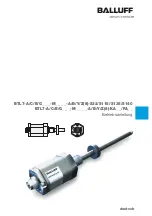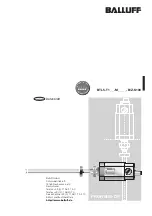
i
IMPORTANT
READ THIS INSTRUCTION MANUAL CAREFULLY
before attempting to operate the transceiver.
SAVE THIS INSTRUCTION MANUAL
—This instruc-
tion manual contains important safety and operating
instructions for the IC-M710.
PRECAUTIONS
EXPLICIT DEFINITIONS
The explicit definitions described below apply to this
instruction manual.
WORD
DEFINITION
R
WARNING
Personal injury, fire hazard or electric
shock may occur.
CAUTION
Equipment damage may occur.
NOTE
If disregarded, inconvenience only. No risk
of personal injury, fire or electric shock.
R
WARNING!
NEVER
connect the transceiver di-
rectly to an AC outlet. This may pose a fire hazard or
result in an electric shock.
R
WARNING!
NEVER
mount the transceiver over-
head. The weight of the transceiver is approximately
7.8 kg. (17.4 lb), but its apparent weight will increase
several fold due to wave shocks and vibration. The
transceiver must be mounted on a flat hard surface
only.
NEVER
connect a power source of more than 16 V
DC, such as a 24 volt battery. This connection will ruin
the transceiver.
NEVER
place the transceiver where normal opera-
tion of the ship or vehicle may be hindered or where it
could cause bodily injury.
NEVER
allow children to play with equipment contain-
ing a radio transmitter.
NEVER
expose the transceiver to rain, snow or any
liquids.
NEVER
install the IC-M710 into a positive-grounding
ship. Such a connection might blow fuses, and is not
usable.
DO NOT
use chemical agents such as benzene or al-
cohol when cleaning, as they can damage the trans-
ceiver’s surfaces.
In maritime mobile operation,
KEEP
the transceiver
and microphone as far away as possible (at least 1 m)
from the magnetic navigation compass to prevent er-
roneous indications.
USE
an Icom microphone and/or handset only (sup-
plied or optional). Other brands may have different pin
assignments and may damage the transceiver.
DO NOT
use or place the transceiver in areas with
temperatures below –20°C (–4°F) or above +60°C
(+140°F).
DO NOT
connect the transceiver to a power source
using reverse polarity. This connection will not only
blow fuses but may also damage the transceiver.
DO NOT
place the transceiver in excessively dusty en-
vironments, or in direct sunlight.
DO NOT
place the transceiver against walls, or putting
anything on top of the transceiver. This will obstruct
heat dissipation.
DISPOSAL
The crossed-out wheeled-bin symbol on
your product, literature, or packaging re-
minds you that in the European Union, all
electrical and electronic products, batter-
ies, and accumulators (rechargeable bat-
teries) must be taken to designated
collection locations at the end of their working life. Do
not dispose of these products as unsorted municipal
waste. Dispose of them according to the laws in your
area.
Icom is not responsible for the destruction, damage to, or
performance of any Icom or non-Icom equipment, if the
malfunction is because of:
• Force majeure, including, but not limited to, fires,
earthquakes, storms, floods, lightning, other natural
disasters, disturbances, riots, war, or radioactive
contamination.
• The use of Icom transceivers with any equipment that is
not manufactured or approved by Icom.
Icom, Icom Inc. and the Icom logo are registered trademarks of
Icom Incorporated (Japan) in Japan, the United States, the United
Kingdom, Germany, France, Spain, Russia, Australia, New Zealand,
and/or other countries.

























